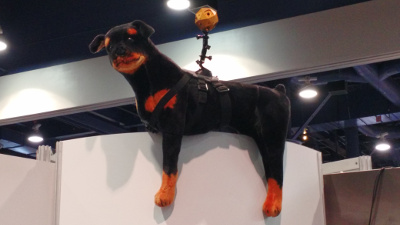
European start-up Sphericam has announced that it’s going into full-scale production in the U.S. this summer with the a 360˚ VR camera capable of live streaming in 4K. The camera, called Sphericam 2, is roughly the size of a baseball and will retail for a mere $2,500 but packs in market-leading features such as 360˚ video recording at 60 frames per second, which is actually better than Nokia’s $60,000 OZO camera.
The brain-child of Prague-based American photographer Jeffrey Martin, the camera was first announced in a successful Kickstarter campaign last year ($450K raised) and has just won a $5M backing from China’s Kingnet Technologies, which pledges to make Sphericam’s products a cornerstone of its VR gaming platform in China.
Sphericam is an unusual company in that it’s based across three European centers – the Czech Republic (finance), Holland (hardware and software design) and Slovenia (sales and marketing).
We discussed the camera with booth personnel and learned that all six cameras are coordinated so they all have a synchronized global shutter as well as built-in stitching, which is good for static and slow moving images. An external stitcher is recommended for off-line stitching of more demanding content. Content is captured in 2D, not 3D and is slowed to 30 fps if the internal stitcher is used.

The design team has been quite clever to fit all this functionality into such a small package. Many other VR designs tend to overheat after a few minutes of operation, but the Sphericam 2 uses the aluminum frame effectively as a heat sink to avoid this issue.
Content can be output in a RAW or JPEG 2000 format. You can capture in high dynamic range, too, by alternating exposure levels at 60 fps, with the composited HDR video at 30 fps. One can actually get a stitched output and the RAW data simultaneously.
In the booth, they did a live demo from the camera that took the RAW output, fed it to a laptop for de-Bayering and stitching and displayed it on a headset – all in real time. – CC

